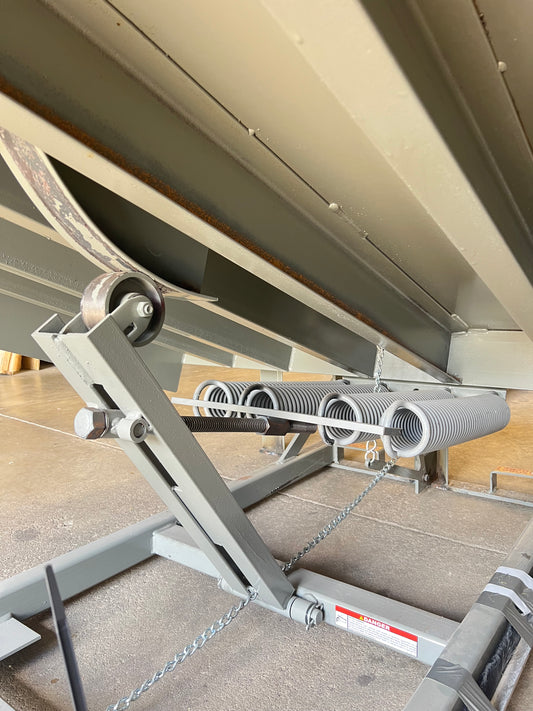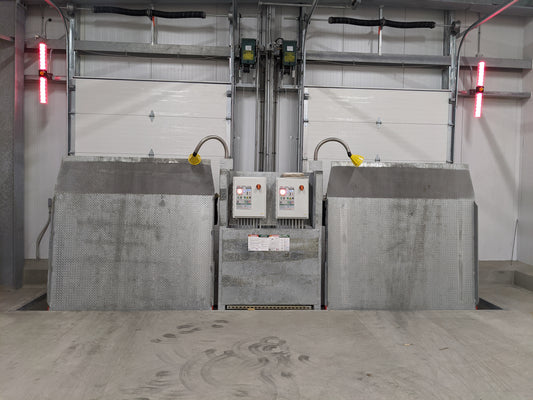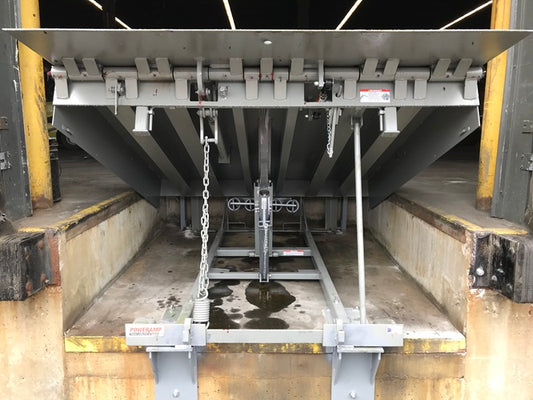Loading dock doors play a crucial role in facilitating the smooth flow of goods and materials in warehouses, manufacturing facilities, and distribution centers. These doors are designed to provide secure access points for loading and unloading operations while also maintaining energy efficiency and enhancing safety. As an installer of warehouse doors (in Cleveland OH), we’ve put together a list below of various types of loading dock doors in-use today.
Sectional Overhead Doors

Sectional overhead doors are among the most common types of loading dock doors. They consist of multiple horizontal panels or sections that are hinged together, allowing them to open vertically and then horizontally along the ceiling. These doors are known for their durability, insulation properties, and ease of operation. They can be made from materials such as steel, aluminum, or fiberglass, offering different levels of strength, insulation and resistance to environmental elements.
Roll-Up Doors

Roll-up doors, also known as coiling doors or overhead doors, consist of interconnected horizontal slats that roll up into a coil above the door opening. These doors are space-efficient as they do not require a large overhead track system. Roll-up doors are often made from steel or aluminum and are available in various thicknesses to suit different security requirements. They are popular for their fast operation, security features, and strength in their ability to withstand high wind speeds.
High-Speed Doors

High-speed doors are designed to minimize the time it takes for a door to open and close, thereby optimizing productivity and energy efficiency. These doors are commonly used in busy loading dock areas where frequent opening and closing occur. High-speed doors are equipped with advanced features such as rapid opening and closing speeds, motion sensors, and flexible curtain materials. They help maintain a controlled environment by reducing air infiltration, maintaining temperature levels, and preventing the entry of dust and contaminants.
Impactable Doors

Impactable doors are specifically designed to withstand incidental collisions and impacts from forklifts, pallet jacks, and other heavy equipment commonly found in loading dock areas. These doors are constructed with flexible materials, such as heavy-duty fabric or rubber, which can absorb and withstand impact forces. Impactable doors help minimize downtime and repair costs caused by accidental collisions, enhancing safety and reducing maintenance requirements.
Vertical Storing Dock Levelers

While not doors themselves, vertical storing dock levelers are worth mentioning as they are often used in conjunction with loading dock doors. These levelers are designed to bridge the gap between the loading dock and the trailer, facilitating the safe and efficient movement of goods. Vertical storing dock levelers retract vertically when not in use, creating a secure seal and minimizing air infiltration, making them ideal for temperature-controlled environments.
Conclusion
Choosing the right loading dock door is essential for ensuring smooth operations, security, and energy efficiency in commercial and industrial facilities. The types of doors mentioned above—sectional overhead doors, roll-up doors, high-speed doors, impactable doors, and vertical storing dock levelers—each offer unique features and benefits tailored to specific needs. Understanding the options available can help businesses make informed decisions when it comes to selecting loading dock doors that best suit their requirements.




